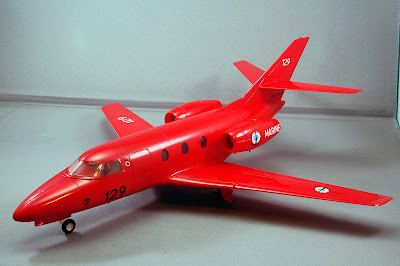Pioneer 2 Beech AT-11 1/72
After an unspectacular introduction in 1937, the design was steadily improved, particularly with respect to engine power and economy of operation until 1939 when, with the introduction of 330-hp Jacobs L-6 engines, the plane became an attractive package. 30 were sold in 1940, at which point the war interrupted its civilian life while giving a terrific boost to Beech's future. The first of an eventual run of more than 4000 D-18s were then contracted by the government.
Plastic Model Review:
http://hsfeatures.com/beechmodel18fr_1.htm
Other AT-11 Information:
http://www.warbirdalley.com/at11.htm
http://www.centennialofflight.gov/essay/GENERAL_AVIATION/beech/GA9.htm
http://www.twinbeech.com/at-11page1.htm



























